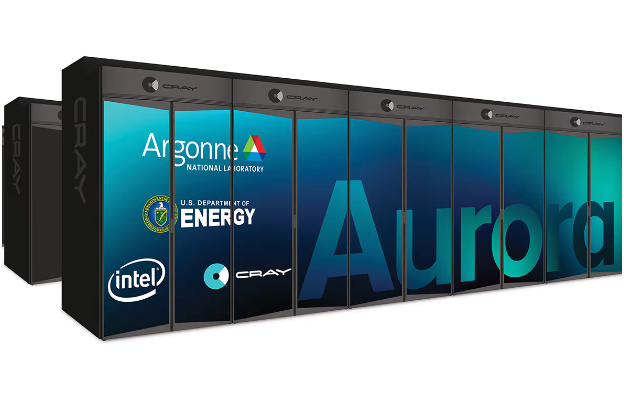Intel’s exascale AI computer, known as the Aurora supercomputer, represents a significant advancement in high-performance computing (HPC) and artificial intelligence (AI). Installed at Argonne National Laboratory, Aurora has achieved notable milestones, including breaking the exascale barrier and leading in AI performance at the International Supercomputing Conference (ISC) 2024[7][9].

Overview of Aurora Supercomputer
Aurora is equipped with Intel’s latest CPU and GPU hardware, featuring 21,248 Sapphire Rapids Xeon CPUs and 63,744 Ponte Vecchio GPUs[7]. This powerful configuration allows Aurora to reach 10.61 AI exaflops, making it the fastest supercomputer for AI applications globally[7]. Despite its impressive capabilities, Aurora was reported to be functioning at 87% capacity during recent tests[7].
Achievements and Performance
Aurora surpassed the exascale computing barrier, a feat previously achieved only by AMD’s Frontier system[7]. In the Linpack (HPL) test, Aurora recorded 1.012 exaflops, nearly doubling its performance since its initial “partial run” in late 2023[7]. However, it still ranked second overall in the Linpack test, with AMD holding the top spot[9].
Challenges and Future Prospects
While Aurora has demonstrated exceptional AI performance, it faces challenges in terms of power efficiency. The system consumes 38,698 kW, significantly more than AMD’s Frontier supercomputer, which runs on 22,786 kW[9]. Intel aims to refine Aurora’s efficiency in future iterations of its CPU and GPU products for HPC[9].
Broader Impact and Applications
Aurora’s capabilities extend beyond traditional computational tasks. It is being used to train large-scale open-source generative AI models for scientific research, with applications ranging from climate change to healthcare[3]. The supercomputer is also part of a broader effort to enhance AI-driven research, supporting projects that require massive computational power and advanced data analytics[3].
Conclusion
Intel’s Aurora supercomputer at Argonne National Laboratory is a landmark in exascale computing, pushing the boundaries of what is possible in scientific research and AI applications. Despite its current limitations in power efficiency, Aurora’s development and deployment mark a significant step forward in the evolution of supercomputing technology. As Intel continues to innovate and improve upon this platform, we can expect Aurora to play a crucial role in solving some of the most pressing challenges facing humanity today[7][9].
Discover more AI News here.
Citations:
[1] https://www.hpcwire.com/2024/04/24/intels-silicon-brain-system-a-blueprint-for-future-ai-computing-architectures/
[2] https://www.intel.com/content/www/us/en/events/supercomputing.html
[3] https://www.intc.com/news-events/press-releases/detail/1631/aurora-supercomputer-blade-installation-complete
[4] https://www.datacenterknowledge.com/hardware/data-center-chips-2024-top-trends-and-releases
[5] https://www.extremetech.com/computing/intel-expects-to-sell-100-million-cpus-for-ai-pcs-by-2025
[6] https://spectrum.ieee.org/frontier-exascale-supercomputer
[7] https://www.extremetech.com/computing/intel-aurora-supercomputer-breaks-exascale-barrier-but-fails-to-topple
[8] https://www.eurekalert.org/news-releases/1029644
[9] https://hothardware.com/news/aurora-supercomputer-with-21k-intel-cpus-breaks-exascale-barrier-for-ai-dominance






